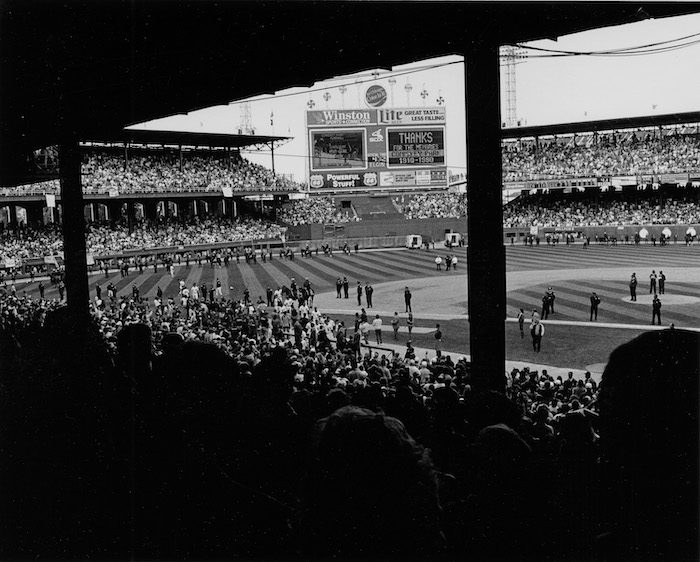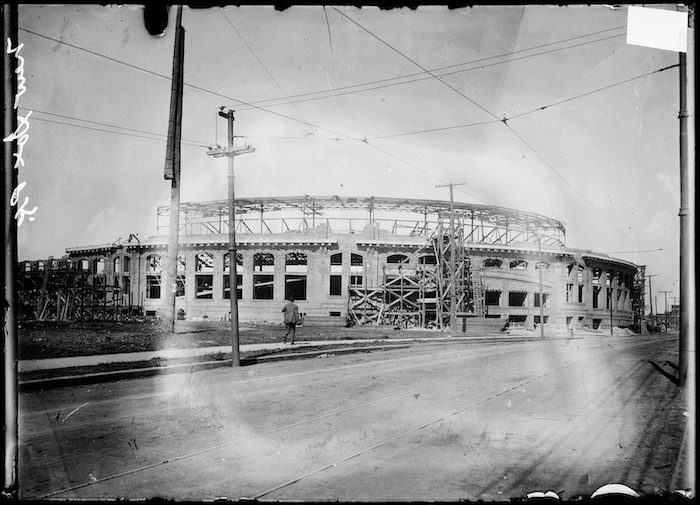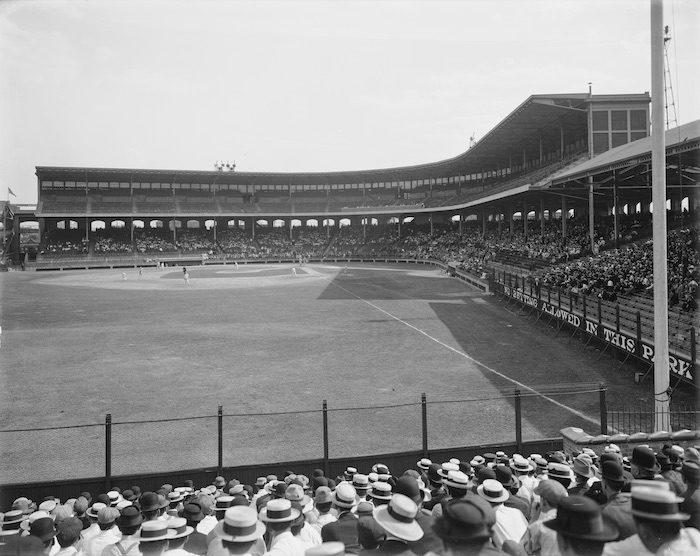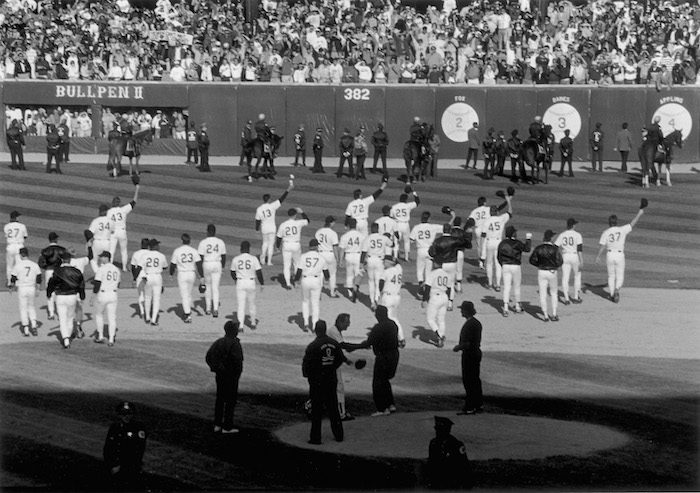On September 30, 1990, the Chicago White Sox played their final game at Comiskey Park.

Police guarding the field at the final game at Comiskey Park, Chicago, September 30, 1990. CHM, ICHi-052133; Melody Miller, photographer
Designed by Zachary Taylor Davis, the fireproof steel and concrete stadium, which replaced the all-wooden South Side Park, was located at 35th Street and Shields Avenue and built on a former city landfill. The stadium was originally named White Sox Park but was renamed a few years later after White Sox owner Charles Comiskey. The park was known for being pitcher-friendly, thanks to design input from hall of famer Ed Walsh, with dimensions of 362 feet down the right and left field lines and 440 feet to deep center field. In its eighty years, not a single player hit 100 career home runs there. Carlton Fisk holds the record with ninety-four.

Comiskey Park during construction, 1910. SDN-008841, Chicago Sun-Times/Chicago Daily News collection, CHM
Comiskey Park hosted more than 6,000 Major League games and four World Series, including the 1918 World Series between the Chicago Cubs and Boston Red Sox (because its seating capacity was larger than that of Wrigley Field, then known as Weeghman Park). It was the site of the first Major League Baseball All-Star Game in 1933 in conjunction with the A Century of Progress International Exposition. During that game, Babe Ruth hit the first ever MLB All-Star home run. The park also hosted many of the East-West Negro League All-Star games from 1933 to 1962.

Comiskey Park during a game, c. 1910. CHM, ICHi-019088; Barnes-Crosby Company, photographer
In addition to the White Sox, the Negro American League’s Chicago American Giants played home games there from 1941 through 1950. The NFL’s Chicago Cardinals and two North American Soccer League teams (the Mustangs and the Sting) also called Comiskey home. The stadium also served as a concert venue, hosting musical acts including The Beatles, AC/DC, and The Jacksons.
The venue underwent numerous numerous cosmetic and seating capacity changes over the years, including the famous “exploding” scoreboard, installed in 1960 by then-owner Bill Veeck. The 130-foot scoreboard included lights, sirens, a message board, and the iconic pinwheels. The sound effects, strobe lights, and fireworks went into action whenever a White Sox player hit a home run. By 1971, Comiskey Park was the oldest park still in use in the Major Leagues.
On September 30, 1990, a crowd of 42,849 attended the ballpark’s final game—a 2–1 Sox victory over the Seattle Mariners. Charles Comiskey, former White Sox vice president and grandson of the park’s namesake, was in attendance. Former All-Star left fielder Minnie Miñoso brought the lineup card to the umpires before the game, and at the end organist Nancy Faust played a final rendition of “Na Na Hey Hey Kiss Him Goodbye.”

The Chicago White Sox baseball team waves farewell to fans after the final game at old Comiskey Park, Chicago, September 30, 1990. CHM, ICHi-035694; Melody Miller, photographer
A new park, now named Guaranteed Rate Field, was constructed directly across 35th Street, and Comiskey Park was demolished in 1991 and turned into a parking lot to serve the new park. The existence of Old Comiskey is remembered with its field and foul lines painted on the lot and a marble plaque where home plate was once located.